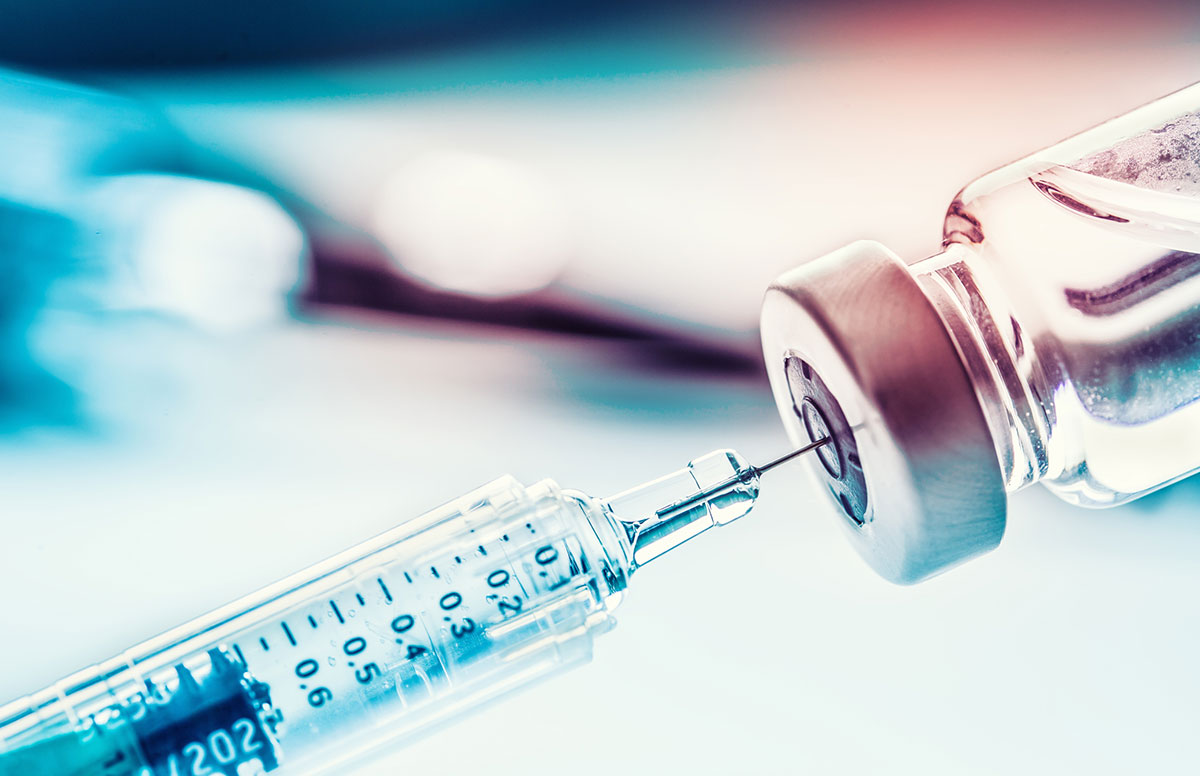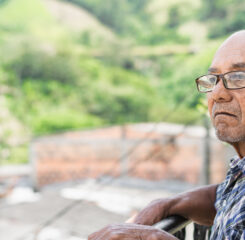Living with COVID: Week 2
This Week’s Highlights:
Volume Two: Air Date 3.21.22. “Living with COVID: From Pandemic to Endemic in New Jersey”
Today, we’ll highlight a really great COVID series coming out of New Jersey Spotlight News; of especial interest in the March 8th webinar, Living with COVID, From Pandemic to Endemic. The webinar featured an impressive panel of medical experts from various health systems and the NJ DOH; to watch the entire webinar, you can find the link in the Handouts. For now, I’ll try to condense a solid 80-minute webinar into 60 seconds.
Introduction – Lynda Schwinner: President and CEO of Jersey HealthCare Quality Institute
Pulled together a group of people from across the spectrum of public health and healthcare providers, right after the first surge, and put together an action plan with four main, high-level steps to take when moving to an endemic state.
Action Plan: How to move from a pandemic to an endemic state (four main points):
· Healthcare workforce.
o Workforce has experienced trauma and stress; must address their mental health.
o Destigmatize mental health, fund it and make it available. Invest and integrate this care into primary care.
o Better handle on workforce – better data. How do we improve licensing and credentialling systems.
· Healthcare delivery and payment structure.
o Everyone needs a trusted primary care provider.
o Invest in the system across all insurance types including Medicare.
o Utilize technologies.
o Home health, help people age in place.
o More accessible
· Social Determinants of Health and Equity.
o COVID impact hit NJ differently than other states.
o Death and hospitalization rates were much higher for Hispanic men and black NJ.
o Related to housing, jobs, sick leave available, your home environment.
o Invest in the changes needed so that we don’t have disparities that we saw.
· Public Health Investment.
o Often ignored until needed. Time to break the cycle.
o Modernize public health, connect it to health care system and to communities and places people go to and trust. Places of worship, senior centers, where people already congregate and get information.
o This requires resources at every level.
PANEL: Living with COVID, Pandemic to Endemic.
#livingwithcovidnj
Panel:
Dr. Johnathon Normal, RWJ Barnabas Health
Dr. Eddy Bresnitz, fmr. NJ DOH and the state Covid Epidemiologist
Robin Cogen, School Nurse, Camden City School District
Dr. Denise Rogers, Rutgers Urban Health and Wellness Institute
Q: What does endemic really mean and are we there now?
A: Not in endemic state just yet. Still too many cases to say the pandemic has ended. We have declared it too soon because we’re hopeful to be there.
Definition: people can get treatment, system can handle it, consistently low numbers of people effected. Still too soon to declare this. There are no hard and fast rules. People still get sick and die in endemic phases. We missed the boat in eradicating the disease, how we must live with managing it. Declaring it over too soon will make it harder to manage it.
There is a lot of confusion and mixed messaging. Telling people to talk off their masks and go back to almost pre-pandemic states. Still have significant problems getting people boosted – this makes it harder if we tell people the pandemic is over. Reluctance in getting children vaccinated – people are confused, why need to vax children if the pandemic is “over.”
We must acknowledge that there are some things we just don’t know, our recommendations will change as we learn more and as the virus changes. That is hard for people to come to terms with, and this creates confusion. Should reach out to women in the reproductive age range. Pregnant women get sick and die more rapidly than anyone else (?)
There is also targeted, wrong information that goes to families. This makes it hard to convince people to get their children vaccinated.
Q: What treatments are available now for COVID-19, and how do you assess them?
A: (See bullets.)
· Massive change from two years ago, we now have inpatient treatments that can really help. We know when and how to put people on ventilation. We can put people on higher concentrations of oxygen first.
· Oral treatments are now available. Pfizer product has same success rate of preventing hospitalization and severe illness as the monoclonal antibody. Some serious interactions that rule people out for the Pfizer oral product. Now, there is enough supply. Merck product isn’t as effective in preventing hospitalization and severe illness.
· Test and treat: is it available now? There is mis information whether you have to pay for it. Right now, there are subsidies to cover the cost. You must have a prescription. Access is definitely an issue for many people. For the oral medication, you must take it within five days of symptoms. Requires the people know they have symptoms, have access to a test and then have access to a physician. Then must get the prescription filled. All these can delay the start of the medication for an individual. Not all testing sites are test-and-treat.
Q: What is the present state of vaccines and the vaccination effort?
A: (See bullets.)
· Vaccines are foundational to our prevention efforts. We need to confirm those who have had the primary course of doses, and far fewer with booster shots received.
· Will there be a fourth dose? Right now, no recommendation for another booster dose. We don’t know the durability of that. Pfizer has applied for a EUA based on data from studies in Israel with some efficacy in preventing serious illness. We need to do studies in the U.S. before we make a decision. We can’t keep boosting people every 3-4 months. We have to determine whether the vaccines will continue to be effective against future variants. A fourth dose is not authorized yet by the FDA.
· Children: Delta and omicron did impact children. 1/3 of U.S. child COVID deaths occurred during delta and omicron. Especially now that mask mandates are dropping and vaccination efforts have stalled. We need mask mandates back in place in schools. We have immunocompromised children in school; children who are under 5. Minority children have been more impacted by COVID than others. We need to focus on the grief aspect; many children have lost caregivers to COVID.
· Many parents of children under age 5 are not planning to get their children vaccinated.
· 8-10 % of all children get complications from COVID or long COVID.
· There are other vaccines now being developed that will be better than the current vaccines, no one talks about that. But the vaccines can be improved and enhanced.
Closing comment: We need to make sure that the resources we offer aren’t just about the vaccines, but also getting food, finding housing, and other social determinants of health.
Volume Three: Air Date 3.23.22. “Brief: White House National COVID-19 Preparedness Plan”
The BA2 variant caused 35% of COVID cases in the U.S. last week – up from 22% the week before according to the CDC. COVID 19 cases are holding steady or rising in 19 states. In the UK where the BA2 variant began escalating earlier, cases, hospitalizations, and deaths are increasing.
We know that older adults are more vulnerable to this Coronavirus and their immunity generally wanes more quickly than for younger people. In the US, 74% of individuals age 12 or older have had two doses of a vaccine, but only 46% have had a booster dose. There is speculation that soon the CDC may recommend a fourth dose for people over 65.
The White House’s new National COVID-19 Preparedness Plan lays out the Administration’s strategies to fight COVID-19, including by preparing for new variants, preventing economic and educational shutdowns, continuing to vaccinate, and protecting against and treating COVID-19. The plan includes:
- The launch of a new nationwide Test-to-Treat Initiative at “one-stop” locations with free tests and free treatment pills.
- Leveraging the administration’s COVID-19 Surge Response Playbook.
- Updated guidance for employers to ensure safer workplaces.
- Saving lives by solving the oxygen crisis and making emergency supplies widely available.
However, that plan and the safety of older adults and providers will require additional funding. Congress has removed $22.5 billion in COVID funding from the $1.5 trillion omnibus spending bill. Many in Congress argue that COVID funding should be gleaned from unspent dollars from previous rounds of COVID funding. There is about $300 billion in unspent pandemic aid, but only about $60 million is unallocated. And trying to claw back that $60 billion would be difficult and controversial with states. The House is working on a $15.6 billion supplemental COVID funding bill, but hasn’t agreed on offsets, nor have they scheduled a vote on the bill.
Without additional money, uninsured Americans will not be able to get free tests and treatments for Covid-19 after March 22, and won’t be able to get free vaccinations through the federal Uninsured Program after April 5. The White House says it won’t be able to buy additional antiviral pills or new monoclonal antibody treatments for people with Covid, or to fund surveillance that could catch future waves of the virus. The White House said it will have to cut back shipments of monoclonal antibody treatments to states by 30% next week and said the nation’s supply of those treatments could run out as soon as May. The government also cannot buy more oral antiviral treatments like Paxlovid beyond the 20 million treatments already secured and needs to scale back planned purchases of preventive treatments for immunocompromised people.
In a Wednesday webinar, the White House reiterated that message and said that if further general COVID funding is not secured, providers will not be reimbursed for services provided to the uninsured – either the providers will absorb the costs of testing, treatments, etc. or they will turn people away. Testing capacity will be severely stretched by late spring / early summer and we will run out of treatments by the same time. We will also not be able to procure additional vaccine for boosters. At this point there may be sufficient money to vaccinate children under 5 and to prioritize COVID treatments for people who are immunocompromised.
CDC also spoke about the new COVID levels metrics and emphasized that everyone needs to be checking the levels to be able to make good decisions to protect themselves based on what is going on in their own communities. There will be new variants and there will be new surges and we should be prepared to adjust our own behaviors accordingly. The pandemic is not over, and we need to continue to advocate for broad and general funding that will help to keep older adults and those who serve them safe across the entire spectrum of settings. LeadingAge will be leading that advocacy effort.

Most Recommended
October 15, 2025
 Shutdown Week Three: Impact of Ongoing Closure on Affordable Housing
Shutdown Week Three: Impact of Ongoing Closure on Affordable Housing
December 10, 2025
Fiscal Year (FY) Funding 2026
October 07, 2025
Immigrant Workforce Matching Program Brings Workforce Relief
Recently Added
December 12, 2025
 Rural Health Transformation Program: What’s in it for Aging Services?
Rural Health Transformation Program: What’s in it for Aging Services?
December 12, 2025
Top Level HR Execs Received 4.67% Salary Increase in 2025
December 12, 2025
Trump Administration Axes ‘Disparate Impact’ Civil Rights Protections
December 11, 2025



